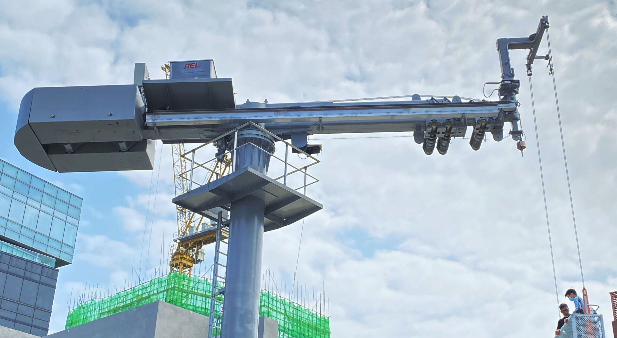Smart buildings demand smart solutions. As energy costs rise and sustainability becomes a global priority, facility managers and business owners are turning to innovative technologies to improve efficiency. A Smart Energy Management System (Smart EMS) offers the perfect synergy between operational control and eco-conscious practices. Designed to monitor, optimize, and automate energy consumption, a Smart EMS is a powerful tool for unlocking both financial and environmental benefits.
Advancer Smart Technology (AST), a leader in IoT-driven building solutions, empowers facilities of all sizes to take charge of their energy consumption. With AST’s Smart EMS, buildings can go beyond traditional energy management and take a proactive step toward intelligent energy transformation.
Why Smart Energy Management Matters Today
The pressure to reduce carbon emissions and energy waste is stronger than ever. Whether you’re managing a commercial property, a public institution, or a residential complex, traditional energy practices no longer suffice. A Smart Energy Management System provides a future-ready approach by leveraging data, automation, and IoT technology to optimize energy usage.
Energy prices are volatile, and inefficient systems can drive up operational costs. Smart EMS platforms help identify energy waste, automate consumption patterns, and provide clear insights that lead to cost-saving strategies. At the same time, they support broader sustainability goals—helping organizations meet government regulations and carbon reduction targets.
Key Features of a Smart EMS
Modern Smart EMS platforms combine a range of intelligent features that allow for total visibility and control over energy usage. Below are the core features that make a Smart Energy Management System indispensable:
Real-Time Monitoring and Analytics: A Smart EMS continuously tracks energy consumption across various systems—lighting, HVAC, equipment, and more. Through detailed dashboards and reports, users gain insights into peak usage times, inefficiencies, and abnormal consumption patterns.
Automation and System Control: One of the strongest features of a Smart EMS is its automation capability. Schedules can be programmed for lighting, air conditioning, and other systems, adjusting based on occupancy or time of day to minimize energy use.
Data-Driven Insights: By turning energy data into actionable insights, users can make informed decisions that directly impact performance. Whether it’s adjusting a building’s cooling schedule or identifying faulty equipment, these insights translate to real-world savings.
IoT Integration with Building Systems: A Smart EMS connects with existing building management systems, leveraging the Internet of Things (IoT) to gather data from sensors and smart devices. This integration ensures all systems work together to achieve peak efficiency.
Benefits of Implementing a Smart Energy Management System
The decision to implement a Smart Energy Management System comes with a variety of long-term benefits, both financially and operationally:
Lower Operational Costs: Through automation and precise control, buildings can significantly reduce energy bills. Reducing peak loads, eliminating waste, and detecting inefficiencies all contribute to lower utility expenses.
Energy Efficiency and Sustainability: A Smart EMS helps buildings reduce their environmental impact by optimizing how energy is used. This aligns with many organizations’ sustainability goals and corporate responsibility initiatives.
Enhanced Comfort for Occupants: By adjusting systems based on real-time conditions and occupancy, a Smart EMS creates a more comfortable indoor environment. Temperature, lighting, and ventilation are regulated more precisely.
Scalability and Flexibility: Whether managing one building or an entire campus, a Smart EMS can be scaled to meet the size and complexity of any facility. Cloud-based platforms allow for centralized control across multiple locations.
Regulatory Compliance: Governments around the world are tightening building energy codes. A Smart EMS makes it easier to meet compliance standards and avoid penalties, while also qualifying for green certifications or incentives.
How Advancer Smart Technology (AST) Leads the Way
Advancer Smart Technology (AST) has redefined what it means to manage energy intelligently. The company’s Smart Energy Management System is not just about controlling usage—it’s about transforming how buildings operate.
AST specializes in IoT-driven smart building management solutions. Their platform collects, analyzes, and converts vast amounts of energy data into meaningful actions. From reducing your carbon footprint to enhancing operational efficiency, AST’s Smart EMS supports a comprehensive energy strategy.
At the heart of AST’s innovation is a commitment to sustainability. Their mission is to simplify building operations, optimize energy use, and minimize environmental impact. Through their Smart EMS, they help clients adapt to modern challenges while focusing on long-term environmental responsibility.
Whether you’re overseeing a single commercial property or an expansive facility network, AST’s solution is tailored for adaptability and performance. With a user-friendly interface and scalable architecture, clients are empowered to make real-time decisions that drive results.
Real-World Applications and Use Cases
The versatility of a Smart Energy Management System makes it suitable for a wide range of environments:
Commercial Offices: Schedule lighting and HVAC systems based on office hours and occupancy. Identify energy waste in underused spaces and cut costs without compromising comfort.
Schools and Universities: Manage energy across classrooms, dormitories, and labs. Automate system operations during weekends and breaks, reducing unnecessary usage.
Healthcare Facilities: Ensure 24/7 energy efficiency in critical areas like operating rooms and patient wards while maintaining comfort and safety.
Retail Spaces: Create a pleasant shopping environment with optimal lighting and temperature control, while minimizing overhead costs during off-peak hours.
Many AST clients have reported measurable results within months of implementation. From a double-digit percentage reduction in utility bills to smoother facility operations, the benefits of a Smart EMS are both immediate and lasting.
How to Choose the Right Smart EMS Provider
Choosing a Smart Energy Management System provider requires careful consideration. Here are the key aspects to evaluate:
Scalability and Compatibility: Make sure the system can grow with your facility and integrate seamlessly with existing infrastructure.
User Interface and Accessibility: Look for intuitive dashboards and cloud access, enabling remote monitoring and management.
Analytics and Reporting: A powerful Smart EMS should offer actionable insights—not just raw data.
Customer Support and Training: Choose a provider that offers strong onboarding, responsive customer support, and continuous updates.
Advancer Smart Technology stands out for all these reasons. Their solutions are developed with the end user in mind, ensuring both ease of use and depth of functionality. AST’s track record in transforming facilities across industries speaks volumes about their expertise and reliability.
The Future of Smart Energy Management
Technological innovation continues to reshape how buildings are managed. The future of Smart Energy Management Systems lies in deeper integration with AI and machine learning. Predictive energy analytics, for example, will allow buildings to adjust systems in anticipation of demand spikes or weather changes.
As smart cities become more prevalent, building energy systems will need to communicate with municipal grids, sharing energy resources dynamically. A Smart EMS will play a pivotal role in this connected ecosystem, enabling demand-response capabilities and grid optimization.
Smart EMS platforms will also continue to empower businesses in achieving ESG (Environmental, Social, and Governance) goals—further aligning energy strategy with corporate values.
Takeaway
A Smart Energy Management System is no longer a luxury—it’s a necessity for modern buildings aiming to reduce costs, improve efficiency, and meet sustainability objectives. From real-time monitoring to intelligent automation, the advantages are clear and impactful.
Advancer Smart Technology’s Smart EMS takes energy management to the next level. By integrating IoT innovation, data analytics, and a sustainability-first mindset, AST equips buildings with the tools needed for long-term success. Whether you’re just beginning your energy transformation journey or seeking to enhance existing systems, AST is the partner that will help you unlock the full potential of smart energy management.











